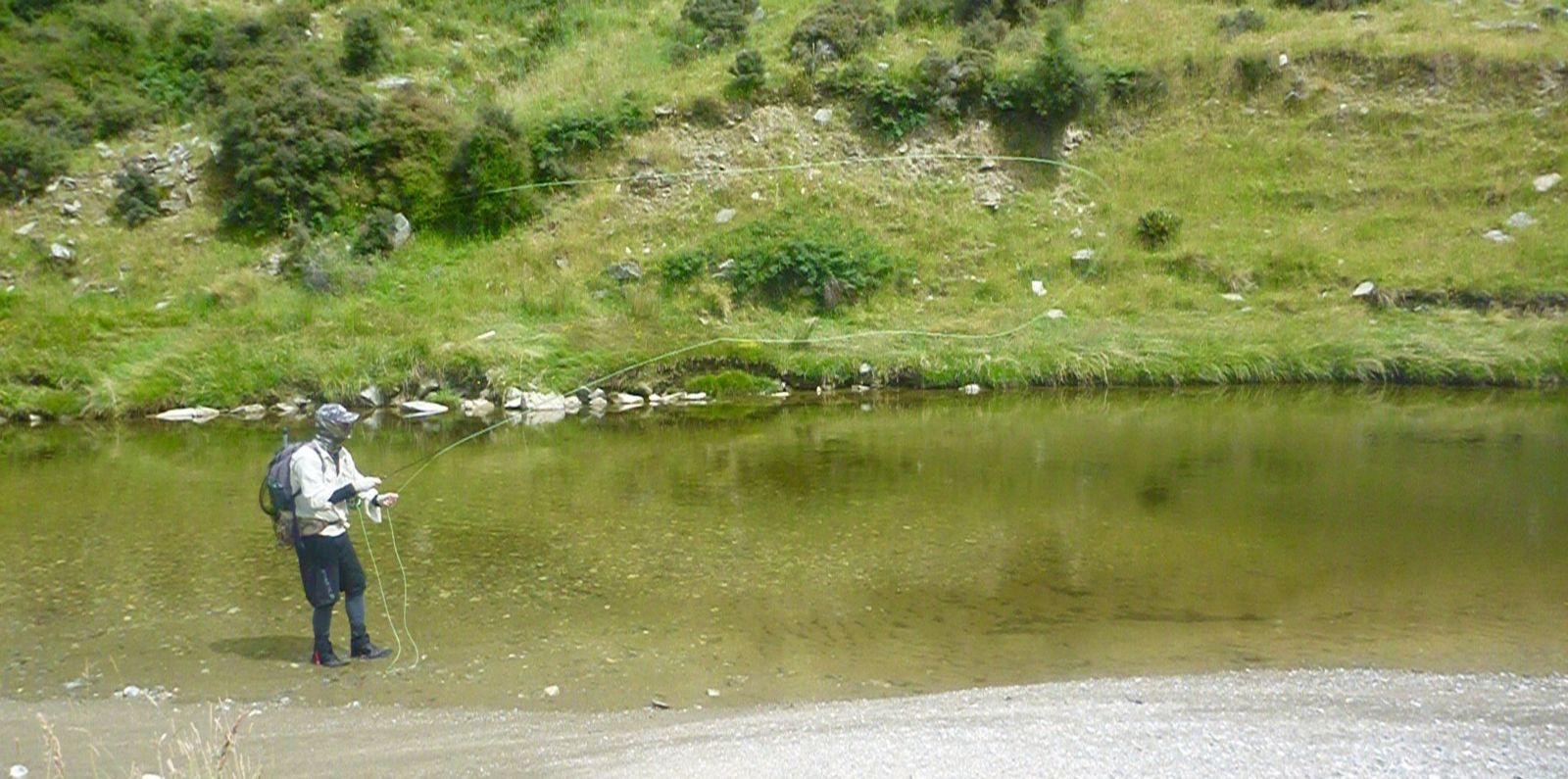Techy Thursdays - Tracking and the Straight Line Path

If you havent spent time on your tracking, chances are its affecting your distance, and accuracy. This is a very common issue I work on with clients.
We all know that tight, efficient loops require the rod tip to track a straight-line path (SLP). This is true not only of the horizontal plane, but also of the vertical (i.e.; from the birds eye view).
Enter the 180-degree rule…
What is tracking?
For tight, efficient straight line casts your rod tip must travel directly away from the target on the back cast, and directly back to it on the presentation in a straight-line path. This journey of the rod tip is known as tracking.
You may notice, particularly when striving for distance or accuracy that the top leg of your casting loop flips over to the side and curves away from the target. This is due to poor tracking.
This is especially common for beginners, who often bring the rod hand up to a position outside the ear on their back cast, and then move it round to the front of the eye on the completion of the forward cast. It is also common in progressive casters trying to punch for more distance – as they reach into the back cast they hook the rod tip around behind them, deviating from the vertical SLP. The rod tip has not moved in a straight line away from the target, and back to it throughout the power stroke; And we all know – the line will follow the path of the rod tip!
If you find yourself struggling to achieve either distance or accuracy, it’s a fair bet your tracking is out!
Correction of poor tracking
So how does one correct poor tracking? You need to achieve SLP (Straight Line Path of the rod tip) in the vertical plane.
First of all, lay a long piece of hi viz rope out in front of you on the grass (similarly you can utilize the touchline on a football field, or any other long, straight line).
Now, standing at one end, try and cast in a straight line along the rope. If you notice your line curving away from the rope, take note of which direction it does so: If it dog-legs to the left, then you are tracking your hand to the left on the forward stroke. If it dog-legs to the right, then vice versa.
Be conscious of bringing your hand both backward and forward in a straight-line path. A good position for the rod hand on completion of the back cast is level with the ear and slightly outside of the elbow. Upon making the forward stroke, make sure that you take your hand directly forwards to the front of the shoulder, not around to the front of the eye!
Now turn around and lay out your back cast along the rope. Ensure this too is of a nice, straight line, and does not hook around. Often accuracy troubles on the forward cast can be attributed to hooking the back cast.
Practice this straight line drill repeatedly, to store the action in your ‘muscle memory’.
Extra Homework
Alternatively, video yourself casting from the front, or stand in front of the mirror with just the butt section of your rod, and practice your stroke. You will soon see if your tracking is not aligned: your rod tip won’t be moving in a straight line directly away from, and then back towards the mirror. As I am a big fan of learning fly casting through pantomime techniques, I spend a lot of time practicing just this, and it has improved my overall stroke immensely.
Yet another piece of golden advice comes from fly casting guru, Bill Gammell. He suggests casting a short line at a point directly in front of your shoulder. When you can hit it consistently, move back one foot at a time and repeat.
Mr Sexyloops, Paul Arden offers some stellar advice for tracking straight on a longer stroke:
“Another good tracking tip when throwing distance is to pick targets, Chris. If your targets are 180 degrees opposite and you cast straight at then it's impossible to fluff up”.
Learn to track straight and you have conquered what I consider to be the biggest hindrance to fly casting progression
